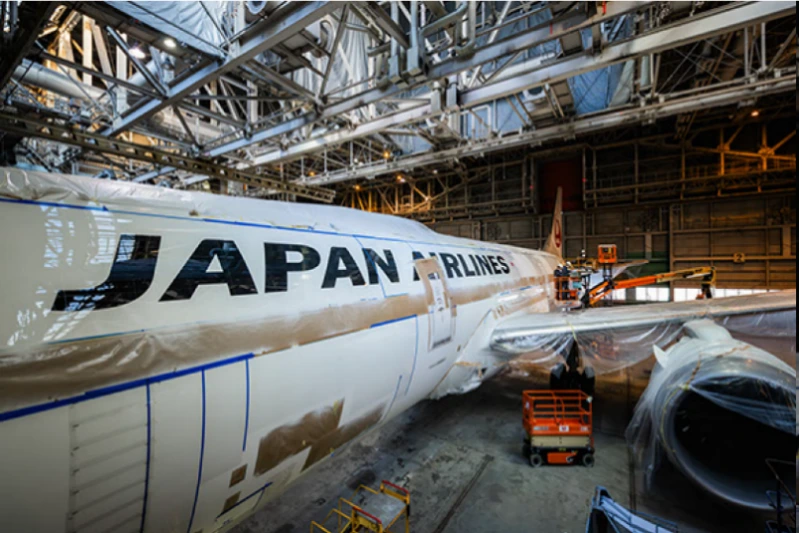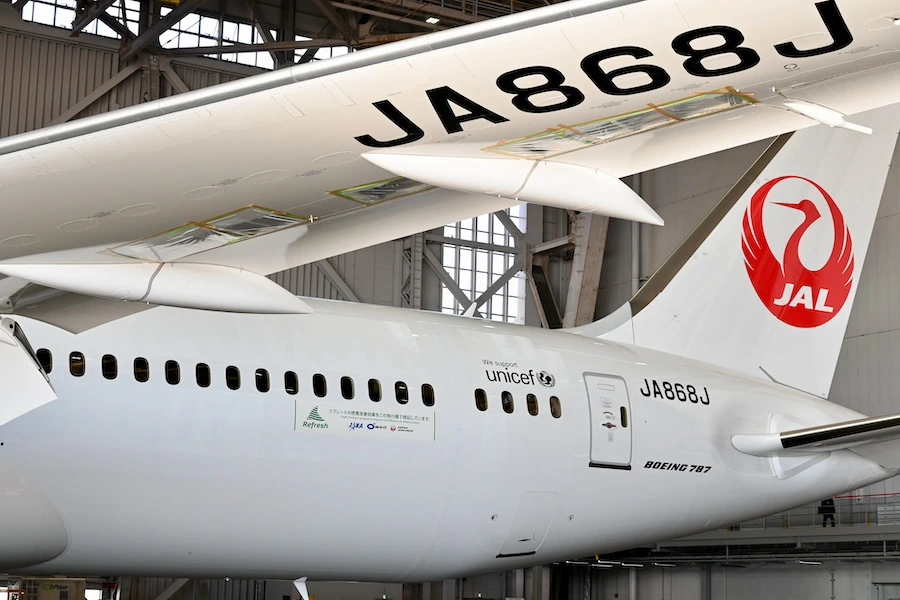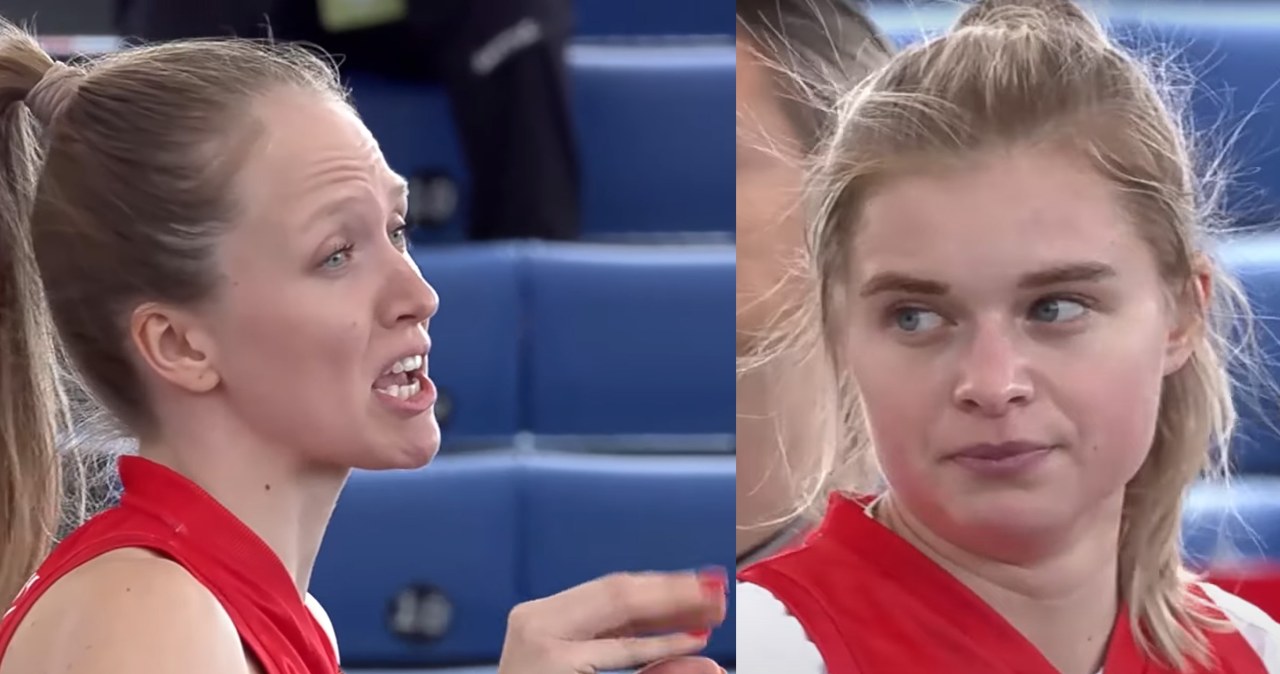
ТОКИО- Японская авиакомпания Japan Airlines (JL) нанесла на свой самолет Boeing 787-9 покрытие в форме риблет для повышения топливной эффективности и сокращения выбросов. Это новшество, разработанное в сотрудничестве с JAXA и Orwell, знаменует собой значительный шаг вперед в области устойчивых авиационных технологий.
Вдохновленное кожей акулы, риблетообразное покрытие выравнивается с воздушным потоком, чтобы минимизировать поверхностное трение. Эта пилотная инициатива начнется на международных рейсах в середине января, предлагая реальную демонстрацию своих потенциальных экологических и эксплуатационных преимуществ.
 Фото: JAXA
Фото: JAXAЯпонские авиалинии создали первое скафандровое покрытие
Покрытие в форме ресниц, разработанное Japan Airlines (JL) в сотрудничестве с Японским агентством аэрокосмических исследований (JAXA) и Orwell, имитирует тонкие канавки, обнаруженные в коже акулы.
Эти канавки помогают упорядочить воздушный поток, уменьшая сопротивление и повышая топливную эффективность. Исследования JAXA показывают, что образование таких канавок на поверхностях самолетов может уменьшить трение поверхности примерно на 5%, что значительно влияет на эффективность дальнемагистрального полета.
JAL принял метод краски-краски Оруэлла для нанесения покрытия в форме ресницы. В отличие от более ранних методов, которые опирались на наклейки или пленки, этот метод использует водорастворимую форму для создания канавок непосредственно над обычной краской.
Покрытие имеет ряд преимуществ, в том числе меньший вес и повышенную долговечность, так как оно менее подвержено шелушению во время полета. Однако он требует квалифицированной рабочей силы для точного применения.
На этом этапе JAL нанес покрытие примерно на 30% фюзеляжа Boeing 787-9. По предварительным оценкам, это нововведение может снизить сопротивление на 0,24% во время круиза.
Для маршрута Токио/Нарита-Франкфурт это может сэкономить 119 тонн топлива и снизить выбросы CO2 на 381 тонну в год.
Технология риблет прошла тщательное тестирование с 2022 года. JAL первоначально наносил покрытие на самолеты Boeing 737-800 для оценки долговечности.
К ноябрю 2023 года авиакомпания расширила фокус на проверку повышения эффективности использования топлива в реальных условиях.
Текущее испытание самолета 787-9 направлено на оценку нескольких факторов, включая долгосрочную долговечность, аэродинамические характеристики и эстетические соображения.
В случае успеха JAL планирует расширить применение покрытия на более широком флоте для дальнейшего повышения своих целей в области устойчивого развития.
 Фото: Japan Airlines
Фото: Japan AirlinesБудущее развитие и сотрудничество
Заглядывая вперед, JAXA, JAL и O-Well продолжат совершенствовать риблетовое покрытие, проверяя его долговечность и эстетическое воздействие, расширяя его применение.
Результаты этих экспериментов помогут оптимизировать экономию топлива и сокращение выбросов CO2 на международных дальнемагистральных рейсах.
Сотрудничество представляет собой важный шаг на пути к достижению цели авиационной промышленности по достижению более устойчивого и экологически чистого будущего.
По мере того, как эта технология риблет входит в международное обслуживание, партнерство стремится расширить свои приложения для дополнительных самолетов и изучить дальнейшие усовершенствования, чтобы максимизировать свои экологические и экономические выгоды.
Похожие технологии: Lufthansa Technik AeroSHARK Фины
Lufthansa Technik и BASF разработали и внедрили AeroSHARK. В конце 2022 года Европейское агентство по авиационной безопасности (EASA) одобрило серию переоборудования двух типов самолетов Boeing 777 с AeroSHARK после детальной оценки.
На сегодняшний день 17 самолетов Lufthansa Group оснащены АэроШАРК, запланированы дополнительные установки.
Lufthansa Technik и BASF стремятся расширить AeroSHARK на другие типы самолетов и большие площади поверхности, поддерживая авиакомпании во всем мире в достижении своих целей по сокращению выбросов.
Оставайтесь с нами. Следуйте за нами в социальных сетях для последних обновлений.
Присоединяйтесь к нам в Telegram Group для последних обновлений авиации. Следуйте за нами в Google News
Japan Airlines может заказать региональные самолеты Embraer в 2025 году
Пост Japan Airlines Applies World’s First Riblet-Shaped Coating on 787 впервые появился на Aviation A2Z.















